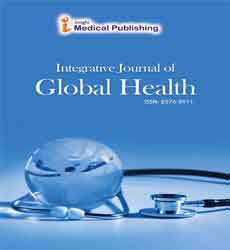ISSN : 2576-3911
Integrative Journal of Global Health
Challenges in Surveillance for Streptococcal Toxic Shock Syndrome: Active Bacterial Core Surveillance, United States, 2014-2017
Abstract
Routine surveillance for streptococcal toxic shock syndrome (STSS), a severe manifestation of invasive group A Streptococcus (GAS) infections, likely underestimates its true incidence. The objective of our study was to evaluate routine identification of STSS in a national surveillance system for invasive GAS infections. Active Bacterial Core surveillance (ABCs) conducts active population-based surveillance for invasive GAS disease in selected US counties in 10 states. We categorized invasive GAS cases with a diagnosis of STSS made by a physician as STSS–physician and cases that met the Council of State and Territorial Epidemiologists (CSTE) clinical criteria for STSS based on data in the medical record as STSS–CSTE. We evaluated agreement between the 2 methods for identifying STSS and compared the estimated national incidence of STSS when applying proportions of STSS–CSTE and STSS–physician among invasive GAS cases from this study with national invasive GAS estimates for 2017.
During 2014-2017, of 7572 invasive GAS cases in ABCs, we identified 1094 (14.4%) as STSS–CSTE and 203 (2.7%) as STSS–physician, a 5.3-fold difference. Of 1094 STSS–CSTE cases, we identified only 132 (12.1%) as STSS–physician cases. Agreement between the 2 methods for identifying STSS was low (κ = 0.17; 95% CI, 0.14-0.19). Using ABCs data, we estimated 591 cases of STSS–physician and
Open Access Journals
- Aquaculture & Veterinary Science
- Chemistry & Chemical Sciences
- Clinical Sciences
- Engineering
- General Science
- Genetics & Molecular Biology
- Health Care & Nursing
- Immunology & Microbiology
- Materials Science
- Mathematics & Physics
- Medical Sciences
- Neurology & Psychiatry
- Oncology & Cancer Science
- Pharmaceutical Sciences
